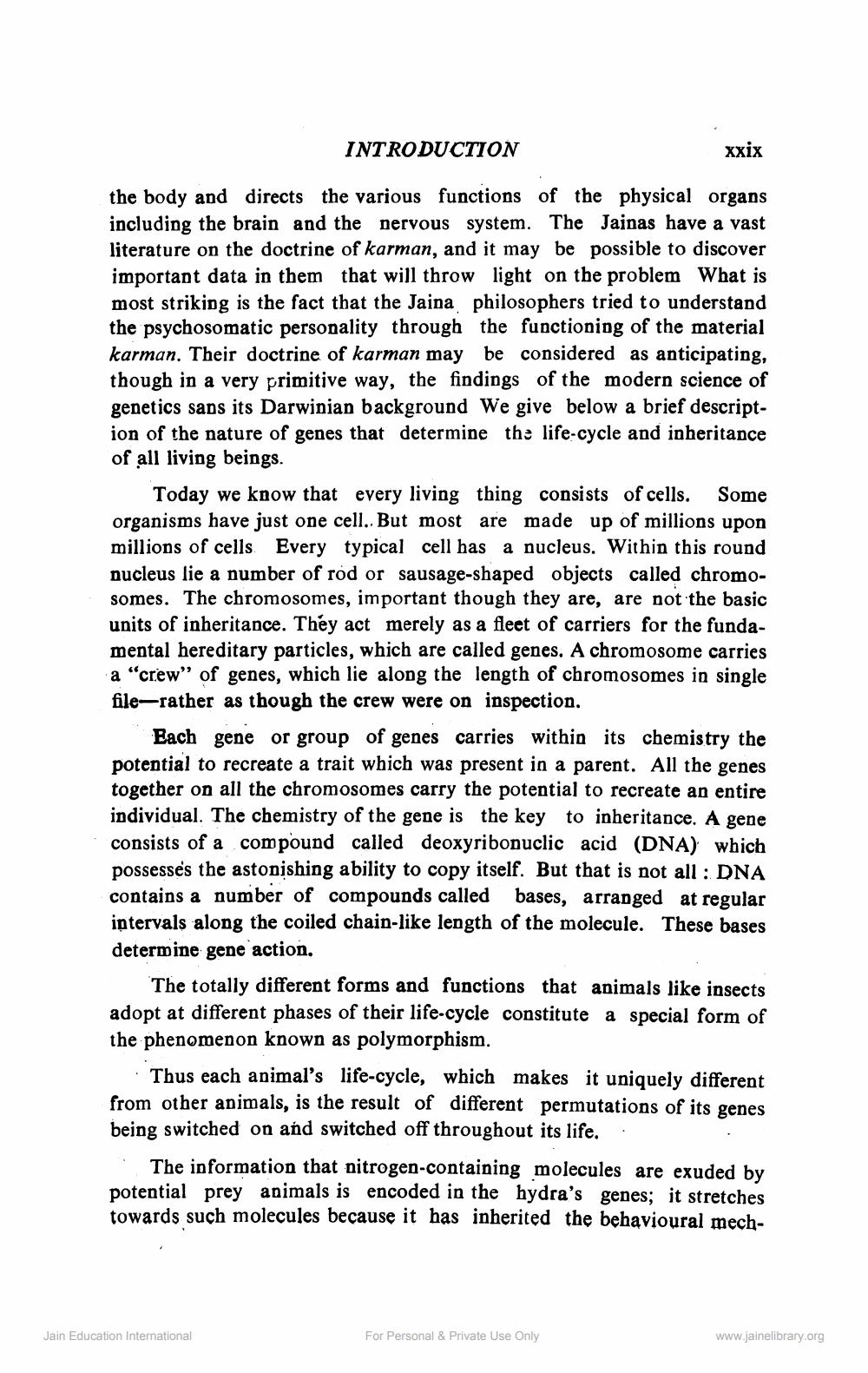________________
INTRODUCTION
xxix
the body and directs the various functions of the physical organs including the brain and the nervous system. The Jainas have a vast literature on the doctrine of karman, and it may be possible to discover important data in them that will throw light on the problem What is most striking is the fact that the Jaina philosophers tried to understand the psychosomatic personality through the functioning of the material karman. Their doctrine of karman may be considered as anticipating, though in a very primitive way, the findings of the modern science of genetics sans its Darwinian background We give below a brief description of the nature of genes that determine the life cycle and inheritance of all living beings.
Today we know that every living thing consists of cells. Some organisms have just one cell. But most are made up of millions upon millions of cells. Every typical cell has a nucleus. Within this round nucleus lie a number of rod or sausage-shaped objects called chromosomes. The chromosomes, important though they are, are not the basic units of inheritance. They act merely as a fleet of carriers for the fundamental hereditary particles, which are called genes. A chromosome carries a "crew" of genes, which lie along the length of chromosomes in single file-rather as though the crew were on inspection.
Each gene or group of genes carries within its chemistry the potential to recreate a trait which was present in a parent. All the genes together on all the chromosomes carry the potential to recreate an entire individual. The chemistry of the gene is the key to inheritance. A gene consists of a compound called deoxyribonuclic acid (DNA) which possesses the astonishing ability to copy itself. But that is not all : DNA contains a number of compounds called bases, arranged at regular intervals along the coiled chain-like length of the molecule. These bases determine gene action.
The totally different forms and functions that animals like insects adopt at different phases of their life-cycle constitute a special form of the phenomenon known as polymorphism.
Thus each animal's life-cycle, which makes it uniquely different from other animals, is the result of different permutations of its genes being switched on and switched off throughout its life..
The information that nitrogen-containing molecules are exuded by potential prey animals is encoded in the hydra's genes; it stretches towards such molecules because it has inherited the behavioural mech
Jain Education International
For Personal & Private Use Only
www.jainelibrary.org




